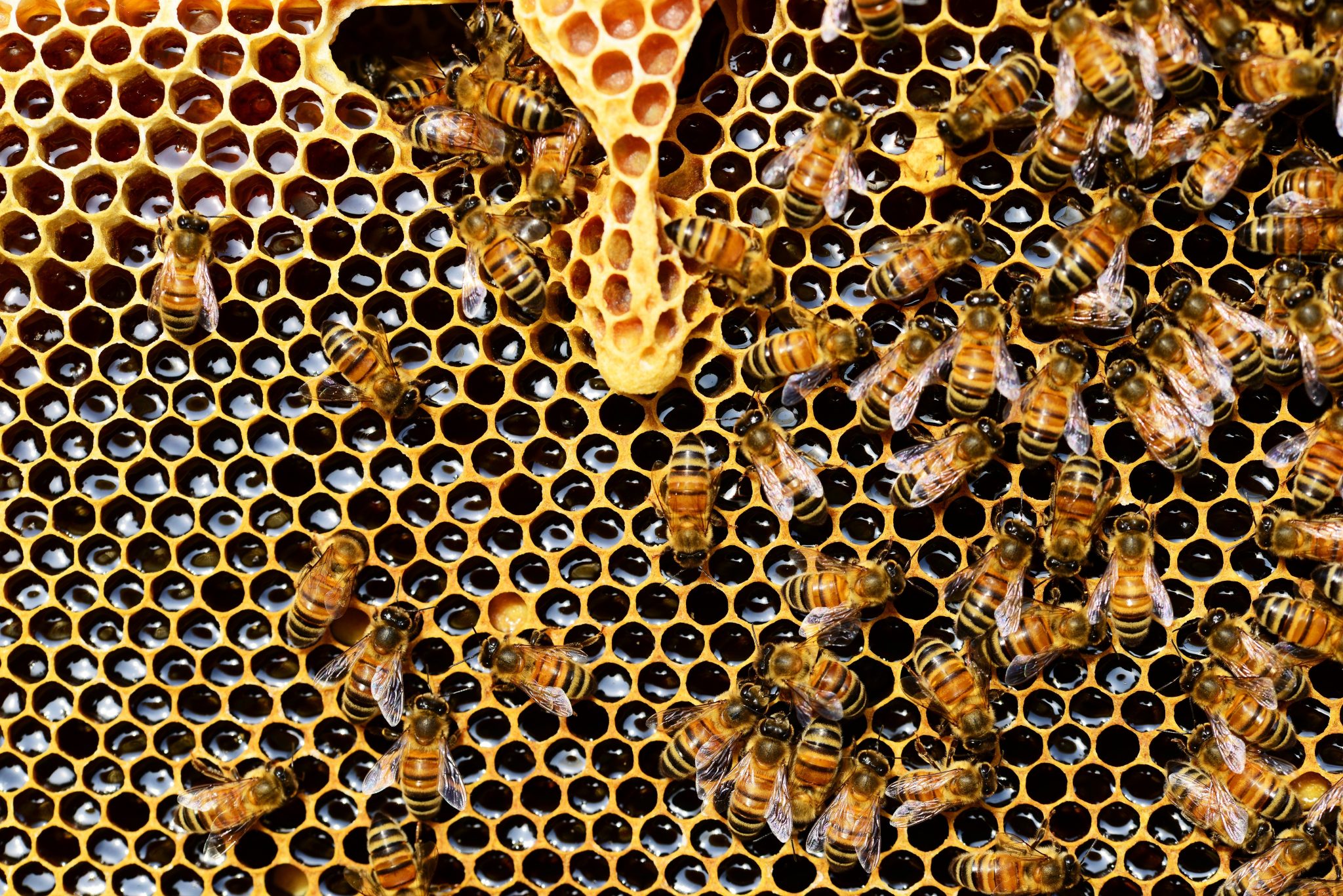Where Do Bees Go During the Winter?
If you managed to get out in the garden over summer, or even venture to your nearby park, you’ll no doubt have seen bees. Buzzing around happily wherever the flowers can be found in warmer weather, they’re an important part of our natural ecosystem – but where do bees go in the winter?
This month at Pest Defence, we’re going to try and shed some light on this mystery, giving you a better insight into what bees do in winter and why you don’t see them.

Where do bees go in winter?
The first thing we should point out is that not all bee species act in the same manner. The three main types we’ll be discussing are the honeybee, the bumblebee and the solitary bee. Here are their overwintering habits and some facts about bees you might not know:
The Honeybee
During winter when cold weather arrives, the honeybee will return to the nest, with the colony huddling up around the queen to keep her warm. They have usually amassed enough honey to last them through the months where it’s too cold to forage, or a beekeeper may add sugar syrup to the colony they keep if they have extracted any honey stocks. Without enough honey, a colony may not survive, but milder winters have recently been helping more feral honeybee colonies to survive.
The Bumblebee
Each winter, a bumblebee colony will mostly die off. It’s not all bad news though, as new queens should have been created to mate during summer and autumn. Once the new queens have mated, they will then hibernate underground until warmer weather returns – this is sometimes triggered early by a warm day, which is why you might spot the odd rogue bumblebee. If they emerge at the right time, a queen bumblebee that has successfully mated with a male from another colony can then set off to create a new colony. This is a cycle repeated annually, with a need for different colonies to cross paths during the mating season.
The Solitary Bee
Within this category, there are multiple different bee types, but generally, the solitary bees will die off in winter with the females having already laid their eggs, sealed away in a nest (usually in a cavity of some form). The females also leave behind a surplus of food so that once they emerge from their eggs, the new bees can survive until they’re fully grown. Certain types of solitary bees will stay inside the nest throughout the next spring before leaving it the following year; others will be triggered into action by a rise in temperature or a disruption of their hibernation nest. The solitary bee can be protected from all weathers since, before leaving, the females will generally secrete a special protective layer in the nest to make it waterproof.
Why am I seeing bees in winter?
There are a number of reasons you might still see a bee in winter, such as the early triggering of their cycle by warmer days. It’s believed that with a gradual increase in the temperature throughout winter, more bees will survive this time of year without having to fully overwinter in a hibernated state. This is helped by more plants and flowers managing to stick around longer or bloom earlier.
Another likely answer to this question is that they may have been disturbed by digging. This is especially the case in certain types of solitary bees. Once sleeping bees are disturbed, they will begin their cycle, but may not make it through the winter if temperatures are too severe. This is why you should never dig in winter near an area where you’ve seen solitary bees.
You can help encourage more bees in your local area by planting more flowers that bloom closer to winter, such as the honeysuckle and snowdrop, and also create bee-friendly habitats in your garden with log piles and banks of earth for burrowing bees. However, if you are having problems with a nearby bees nest, you can always count on Pest Defence to help out.
It can be distressing if you discover a nest in your home or your commercial property, but as we mentioned earlier in this article (as well as in a previous piece), bees are vitally important to the natural order of things. That’s why, if you need a bees nest removed, we aim to preserve the bee colony, moving them to an alternative location or by giving it to a local beekeeper.
If you’ve got an issue involving British bees on your property and you’d like professional assistance in safely removing the nest for relocation, look no further. We operate across Colchester, Chelmsford, Brentwood and the surrounding areas of Essex – simply call us today for expert advice when it comes to bees.


